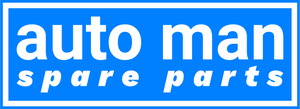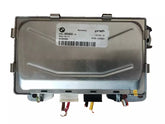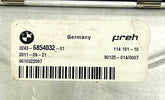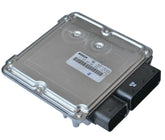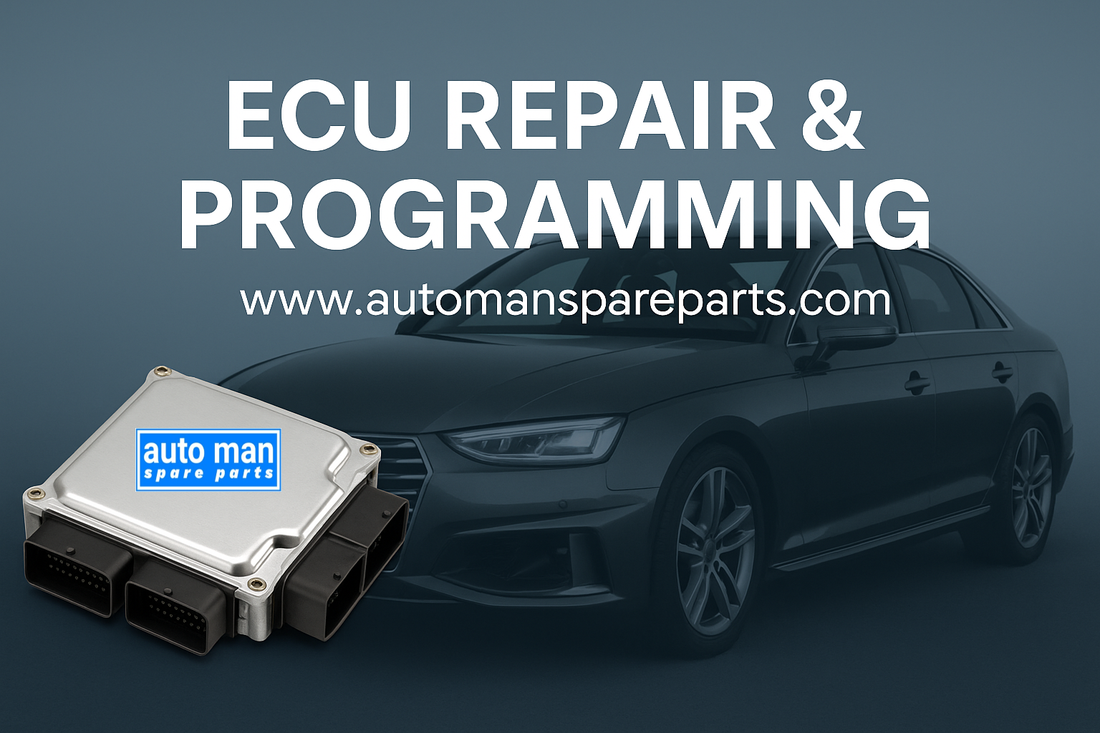The Engine Control Unit (ECU), often referred to as the brain of your vehicle, is responsible for managing critical engine functions, including fuel injection, ignition timing, air-to-fuel ratio, and emissions control. A properly functioning ECU ensures your car runs efficiently, delivers optimal performance, and meets emission standards.
In this article, we’ll explain what an ECU is, how it works, common failures, how to repair ECU hardware, and the step-by-step process of programming it.
What is an Engine Control Unit (ECU)?
An ECU is a small electronic device that uses sensors and microprocessors to control engine operations. It receives data from multiple sensors (oxygen, temperature, throttle, etc.) and processes this data to send signals to actuators (fuel injectors, ignition coils, etc.), ensuring smooth performance.
Key Functions of an ECU:
-
Monitoring engine performance in real-time.
-
Regulating air-fuel mixture.
-
Controlling ignition timing.
-
Managing emissions and exhaust.
-
Supporting onboard diagnostics (OBD-II).
How Do ECUs Work?
The ECU works like a mini-computer, consisting of:
-
Microprocessor (CPU): The core brain of the ECU, responsible for data processing.
-
Memory Units: Includes EEPROM, flash memory, and RAM for storing engine maps and data.
-
Input/Output Interfaces: Connects sensors and actuators to the ECU.
-
Power Supply & Communication Circuits: Supports CAN-bus communication with other control modules.
Common Symptoms of ECU Failure
-
Check Engine Light On.
-
Engine Misfires or Stalling.
-
Poor Fuel Economy.
-
Difficulty Starting the Car.
-
Loss of Power or Acceleration Issues.
How to Repair an ECU – Step-by-Step
Note: ECU repair requires technical knowledge and the right tools. For beginners, consulting a professional is recommended.
1. Diagnosing the ECU
-
Use an OBD-II scanner to read error codes.
-
Inspect the ECU for burnt components, water damage, or corroded pins.
2. Disassembling the ECU
-
Carefully remove the ECU from the vehicle.
-
Open the ECU casing using the appropriate tools (Torx or flat screwdrivers).
3. Testing Components
-
Use a multimeter or oscilloscope to check resistors, transistors, capacitors, and power circuits.
-
Inspect the microprocessor and EEPROM chips for signs of failure.
4. Replacing Faulty Components
-
Replace damaged capacitors or transistors using soldering tools.
-
Repair any broken or burnt PCB tracks.
How to Program an ECU
Programming (or “flashing”) the ECU involves writing new data to the ECU’s memory to adjust engine parameters or update firmware.
Steps to Program an ECU:
-
Obtain the Correct ECU Software/Map.
-
Download OEM or aftermarket maps compatible with your vehicle.
-
-
Use the Right Tools.
-
ECU Programmer Tools: KESSv2, K-TAG, Autotuner, or Alientech.
-
Laptop with ECU tuning software.
-
-
Connect to the ECU.
-
Via OBD-II port (for minor tuning) or direct connection to ECU pins (for deep programming).
-
-
Backup Existing Data.
-
Always save the original ECU map in case you need to restore it.
-
-
Flash or Modify ECU Data.
-
Write new calibration data to the ECU.
-
-
Test the Vehicle.
-
Check for proper performance, fuel economy, and engine response.
-
Can All ECUs Be Repaired?
Not all ECUs are repairable. Severe water damage, burnt microprocessors, or corrupted memory beyond repair often require replacing the unit with a new or refurbished ECU.
Buying a Replacement ECU
If your ECU is beyond repair, consider buying a genuine replacement. At www.automanspareparts.com, we offer:
-
Genuine OEM ECUs at competitive prices.
-
Compatibility support with your vehicle model.
-
Warranty and technical guidance.
Final Thoughts
The ECU is the heart of modern vehicles. Understanding how it works, diagnosing problems early, and knowing the basics of repair and programming can save you time and money. For professional ECU services or genuine replacement units, Automan Spare Parts is your trusted partner.
Frequently Asked Questions (FAQs) About Engine Control Units (ECU)
1. What is the cost of repairing an ECU?
The cost of ECU repair depends on the extent of the damage and the vehicle model. On average, ECU repairs can range from $150 to $800, while complete replacement may cost between $500 and $2,500. Professional diagnostics are necessary to determine if repair or replacement is the better option.
2. Can a damaged ECU be reprogrammed instead of replaced?
Yes, in many cases, a malfunctioning ECU can be reprogrammed instead of replaced. If the problem is caused by corrupted software or minor hardware issues, ECU reprogramming can restore its functionality. However, severe physical damage to the processor or circuit board often requires replacement.
3. How do I know if my ECU needs repair or replacement?
Common signs include a persistent Check Engine Light, stalling, poor fuel economy, or failure to start. A diagnostic scan tool can help identify ECU-related error codes. If the ECU is physically damaged or fails to communicate with other vehicle modules, it might need replacement.
4. Do I need to program a new ECU before using it?
Yes, most new or used ECUs need to be programmed or “coded” to match your car's engine, immobilizer, and other control systems. Without proper programming, the car may fail to start or function correctly.
5. Can I program an ECU at home?
ECU programming at home is possible but requires technical knowledge, OBD-II tuning tools, and the correct software. Incorrect programming may cause severe engine issues. For beginners, it is recommended to get ECU programming done by a professional.
